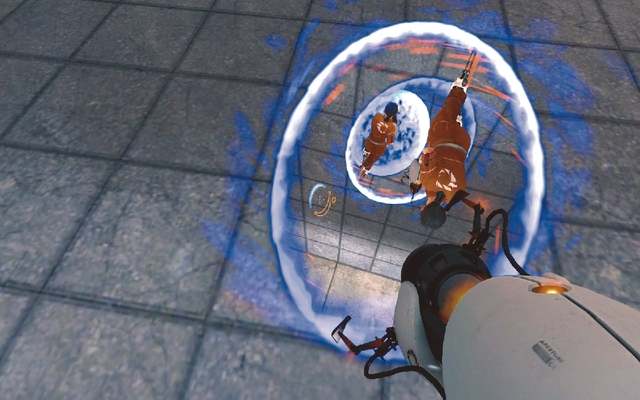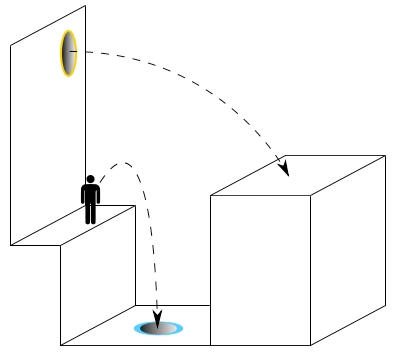Emerge Remerge Demerge
Complex Games Yield Unexpected Results


Curiouser and curiouser.

Seeing yourself out of the corners of both eyes.

Two well-placed portals reveal infinity.









